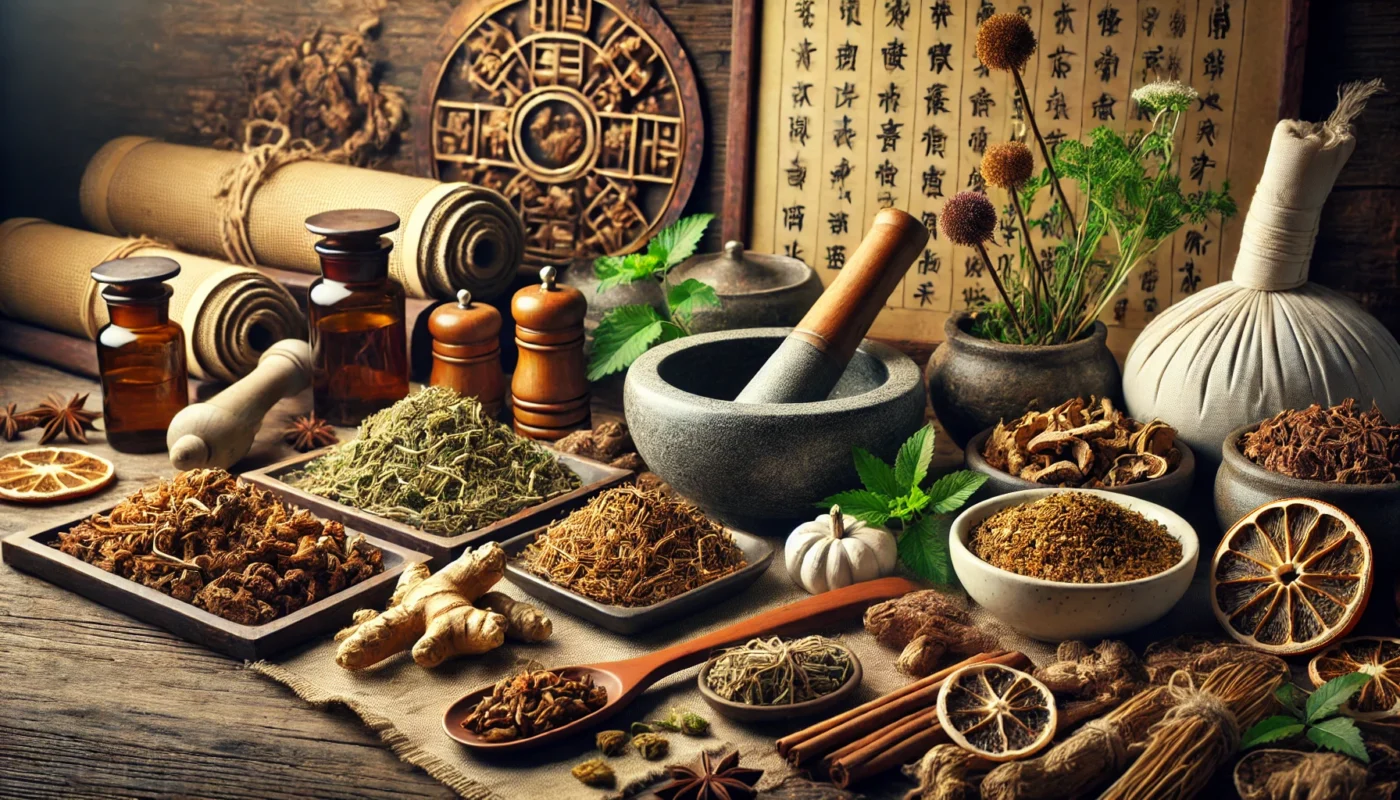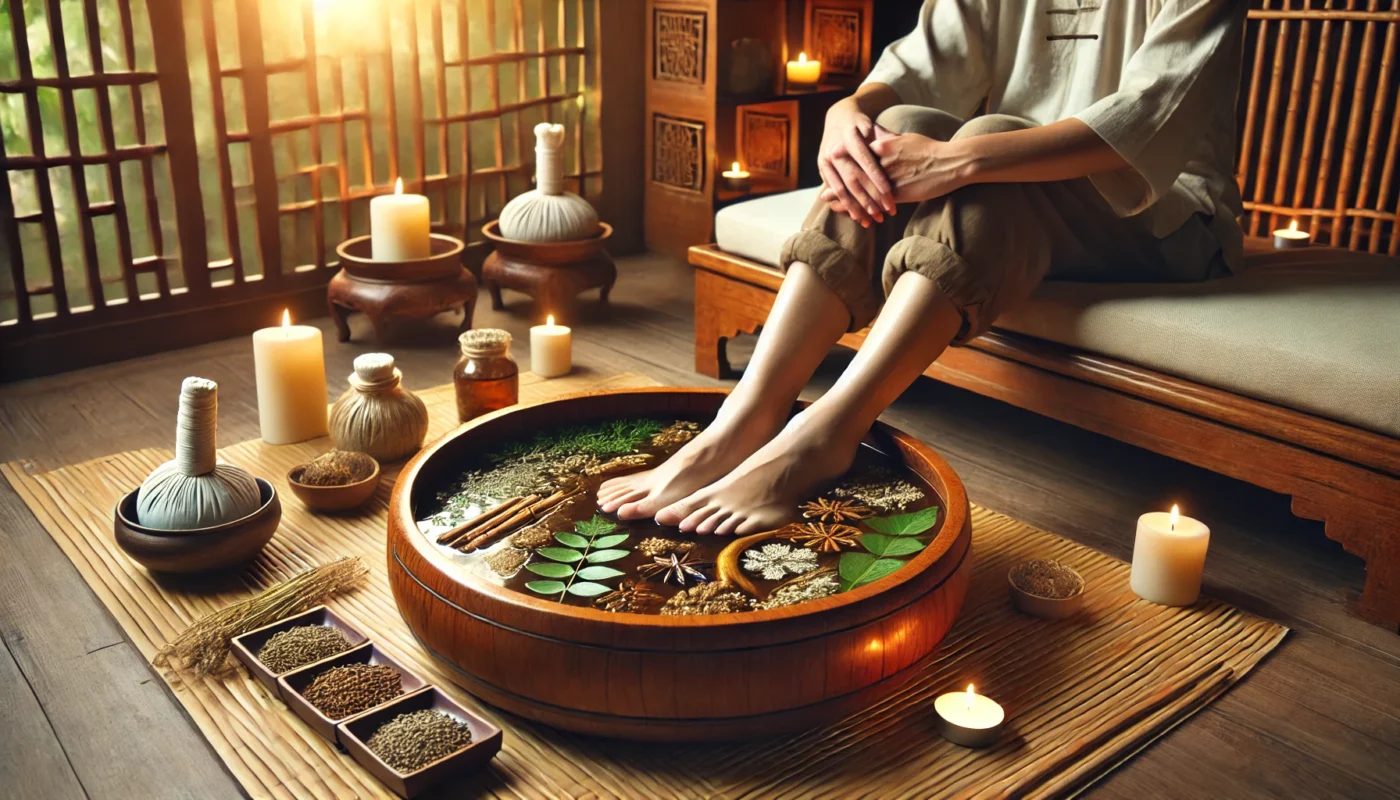Traditional Chinese Medicine (TCM) has been a cornerstone of Eastern health practices for millennia, embodying a holistic philosophy that seeks to harmonize the body and mind. Rooted deeply in Chinese culture, TCM not only addresses physical ailments but also aims to balance emotional and spiritual well-being. As the modern world increasingly turns to approaches to health, the timeless wisdom of TCM offers a unique perspective on pain relief, blending ancient practices with contemporary scientific insights. In this expanded exploration, we delve deeper into the world of TCM, its foundational principles, diverse techniques, and its place in modern healthcare systems.
You may also like: Exploring Alternative Treatments for Pain Relief
Understanding the Core Principles of TCM
At its essence, TCM is built upon a foundation of ancient philosophical concepts, which provide a framework for understanding health and disease. These principles offer insight into how TCM approaches the complex phenomenon of pain.
The Concept of Qi: The Vital Life Force
Qi, pronounced “chee,” is considered the vital life energy that flows through the body, nourishing organs and maintaining health. According to TCM, Qi should flow freely and harmoniously for optimal health. Disruptions in this flow can manifest as pain, signaling an imbalance that needs correction.
Practitioners utilize a range of techniques and approaches aimed at restoring the flow and balance of Qi within the body. The fundamental belief underlying these practices is that when Qi is balanced and harmonized, individuals often experience a significant reduction in pain and an overall enhancement in their vitality and energy levels. This understanding emphasizes the importance of maintaining in the body’s energy systems, as it is thought to contribute positively to physical well-being and emotional health.
The Five Elements: Interconnected Systems
The Five Elements—Wood, Fire, Earth, Metal, and Water—serve as a metaphorical system to describe the interactions and relationships within the body. Each element corresponds to specific organs and bodily functions, and their dynamic interplay is crucial for maintaining health. In TCM, pain can be interpreted as an imbalance among these elements. For instance, an excess of the Wood element might be linked to liver issues, which could manifest as headaches or irritability.
Yin-Yang Theory: The Balance of Opposites
Yin and Yang represent the dualistic nature of existence, embodying opposite but complementary forces. Yin is associated with coolness, rest, and nurturing, while Yang represents heat, activity, and stimulation. In TCM, health is achieved by maintaining a balance between Yin and Yang. Pain may arise from an excess or deficiency in one of these forces, prompting treatments aimed at restoring.
Diverse TCM Techniques for Pain Management
Traditional Chinese Medicine employs a variety of techniques to address pain, each with its own unique method of restoring balance and promoting healing.
Acupuncture: Precision in Pain Relief
Acupuncture involves inserting fine needles into specific acupoints to manipulate the flow of Qi. This practice can trigger the body’s natural pain-relieving mechanisms, such as the release of endorphins.
In addition to providing immediate relief from pain, acupuncture has a broader purpose that goes beyond just discomfort. It seeks to identify and address the root causes of various health issues and underlying imbalances within the body. This approach allows acupuncture to serve as a versatile treatment option that can be beneficial not only for chronic conditions, which are long-lasting and often complex, but also for acute conditions that arise suddenly and may require prompt attention. By focusing on overall wellness and balance, acupuncture offers the potential for a more comprehensive healing experience.
Research has supported its efficacy in diverse pains, from back pain to tension headaches.
Herbal Medicine: Nature’s Pharmacy
Chinese herbal medicine uses a wide range of plants, minerals, and animal products to create remedies tailored to individual needs. Herbs like ginger and turmeric are known for their anti-inflammatory properties, while others like ginseng are valued for their restorative effects. Practitioners craft complex formulations that target specific imbalances, offering a personalized approach to pain relief that considers the patient’s unique constitution and symptoms.
Cupping Therapy: Stimulating Circulation
Cupping involves placing cups on the skin to create suction, believed to enhance blood flow and reduce muscle tension. This technique has been popularized by athletes and celebrities, but its roots in TCM are ancient. While anecdotal evidence supports its benefits for pain relief, scientific validation is still evolving. Cupping is often used in conjunction with other TCM practices to enhance therapeutic outcomes.

Tui Na Massage: Hands-On Healing
Tui Na is a form of therapeutic massage that incorporates acupressure, stretching, and manipulation to address pain and improve circulation. It is often used alongside acupuncture and herbal medicine, providing a comprehensive treatment approach. Tui Na focuses on correcting musculoskeletal and energetic imbalances, offering relief from conditions like sciatica, neck pain, and joint stiffness.
Moxibustion: Warmth for Healing
Moxibustion involves burning moxa, a type of dried mugwort, near the skin to warm and invigorate the flow of Qi. This practice is particularly effective for cold-related conditions and is often used to enhance the effects of acupuncture. Moxibustion can help alleviate pain by promoting circulation and dispelling cold and dampness from the body.
Scientific Perspectives on TCM for Pain Relief
The integration of TCM into modern healthcare has prompted scientific inquiry into its methods, revealing both promising results and areas for further research.
Research Findings: Evidence and Effectiveness
Clinical studies have shown acupuncture’s effectiveness in reducing pain for conditions like osteoarthritis and migraines. Systematic reviews often highlight its potential for improving quality of life in chronic pain sufferers. Similarly, research on herbal medicine has identified bioactive compounds with significant anti-inflammatory effects, though standardization remains a challenge.
Challenges in Research: Methodology and Cultural Context
Many TCM studies face methodological limitations, such as small sample sizes and lack of rigorous controls. The subjective nature of pain and cultural differences in perception add complexity to evaluating TCM’s effectiveness. These challenges underscore the need for more comprehensive and culturally sensitive research methodologies.
Integrating TCM with Conventional Medicine
Increasingly, TCM is being incorporated into medicine practices, combining traditional and modern approaches. This integration allows patients to benefit from a wider range of treatment options, potentially enhancing pain management outcomes. Collaboration between TCM practitioners and conventional healthcare providers is crucial for safe and effective integration.
Practical Tips for Incorporating TCM into Your Pain Management Plan
For those interested in exploring TCM, a thoughtful approach is essential to maximize benefits and ensure safety.
Consult with a Qualified Practitioner
Seek out a licensed TCM practitioner who can assess your condition and create a personalized treatment plan. Their expertise is vital in navigating the complexities of TCM and ensuring that treatments align with your health needs.

Embrace a Holistic Approach
TCM emphasizes the interconnectedness of body, mind, and spirit. Be open to addressing lifestyle factors such as diet, exercise, and stress management as part of your treatment plan. A holistic approach can enhance the effectiveness of TCM therapies and contribute to overall well-being.
Communicate with Your Healthcare Provider
Discuss your interest in TCM with your healthcare provider, especially if you’re receiving conventional treatments. Open communication ensures that all therapies are coordinated safely and effectively, preventing potential interactions or refer to specific situations or conditions in which a particular treatment, medication, procedure, or intervention should not be used because it may be harmful to the patient. These can arise from various factors, including underlying health conditions, allergies to certain substances, or interactions with other medications the individual is taking. Recognizing contraindications is crucial in ensuring patient safety and effective treatment, as they guide healthcare providers in making informed decisions about which therapies or interventions are appropriate for each individual case.
In clinical practice, contraindications can be classified into two main categories: absolute and relative contraindications. Absolute contraindications indicate that a treatment should never be administered to a patient under any circumstances due to a significant risk of adverse effects or complications. Conversely, relative contraindications suggest that a treatment may be considered, but only with caution and under specific circumstances. In such cases, the potential benefits of the treatment may outweigh the risks, though close monitoring and additional precautions may be necessary.
It is essential for both healthcare providers and patients to be aware of potential contraindications. This knowledge allows for a thorough assessment of the patient’s medical history, current medications, and overall health status. By identifying any contraindications early in the process, healthcare professionals can tailor treatment plans that prioritize patient safety while also meeting their healthcare needs. Open communication between the patient and the provider is vital in this aspect, as it encourages patients to share relevant information and concerns that may influence their treatment options.
Ultimately, understanding contraindications plays a fundamental role in the overall healthcare process. It helps prevent potentially dangerous situations and supports the delivery of personalized and effective care. Regularly reviewing updated medical literature, guidelines, and clinical protocols can further enhance awareness and understanding of contraindications, making them an integral part of responsible and informed healthcare decision-making.
Monitor Your Progress and Adjust as Needed
Keep a journal of your symptoms and any changes you notice during TCM treatment.
This information holds significant value not just for you, but also for your practitioner. By reviewing this data together, you can both gain insights into how well your current health plan is working. It allows you to assess its effectiveness and identify any areas that may require changes. This collaborative approach facilitates informed discussions on whether adjustments are needed to enhance your health outcomes.
Be Patient and Persistent
TCM often requires time and consistency to achieve desired results. Be patient with the process and persistent in following your treatment plan. Regular follow-ups with your practitioner can help track progress and make any needed.

Conclusion
Traditional Chinese Medicine offers a wealth of techniques and insights for pain relief, grounded in centuries of practice and cultural wisdom. While scientific research continues to explore its mechanisms and effectiveness, many individuals have found TCM to be a valuable complement to conventional treatments. By approaching pain management with an open mind and a willingness to explore holistic options, you can discover new pathways to healing and enhance your overall quality of life. Whether through acupuncture, herbal medicine, or other TCM modalities, the journey towards pain relief can be enriched by the timeless principles of balance and harmony.
Further Reading:
Chinese Herbs for Pain Relief + How to Use Them
TCM, Traditional Chinese Medicine, holistic health, pain management, acupuncture, herbal medicine, treatment plan, healthcare provider, patient safety, contraindications, wellness, lifestyle factors, mind-body connection, symptom tracking, personalized care, alternative medicine
Important Note: The information contained in this article is for general informational purposes only, and should not be construed as health or medical advice, nor is it intended to diagnose, prevent, treat, or cure any disease or health condition. Before embarking on any diet, fitness regimen, or program of nutritional supplementation, it is advisable to consult your healthcare professional in order to determine its safety and probable efficacy in terms of your individual state of health.
Regarding Nutritional Supplements Or Other Non-Prescription Health Products: If any nutritional supplements or other non-prescription health products are mentioned in the foregoing article, any claims or statements made about them have not been evaluated by the U.S. Food and Drug Administration, and such nutritional supplements or other health products are not intended to diagnose, treat, cure, or prevent any disease

